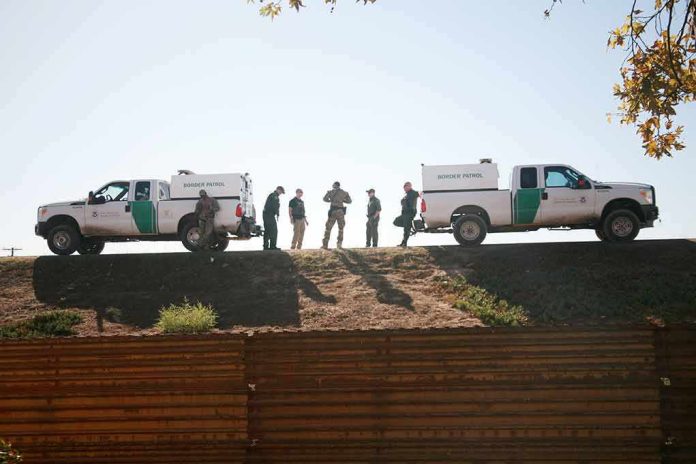
President Trump’s border security strategy takes a monumental leap forward as the Pentagon establishes a massive 250-mile military buffer zone along the Texas-Mexico border, enabling U.S. forces to detain illegal immigrants before turning them over to Border Patrol.
Key Takeaways
- The U.S. Air Force has established a 250-mile military buffer zone along the Rio Grande in Texas’s Cameron and Hidalgo counties
- This zone is part of a network of four “National Defense Areas” being established along the southern border
- Military personnel can temporarily detain undocumented migrants for trespassing before handing them to Border Patrol
- The buffer zone is an extension of Joint Base San Antonio and follows President Trump’s April mandate for enhanced border security
- Two additional buffer zones are being established in Arizona, creating a comprehensive security network
Pentagon Expands Border Security Infrastructure
On June 25, the U.S. Air Force announced the creation of a significant 250-mile buffer zone along the Rio Grande, covering critical areas in Texas’s Cameron and Hidalgo counties. This extensive security corridor will function as an extension of Joint Base San Antonio, replacing previous management by the International Boundary and Water Commission. The move represents a dramatic escalation in the Trump administration’s border security approach, providing military personnel with expanded authority to intercept illegal crossings at one of the border’s most vulnerable sections.
“The Department of Defense is establishing a new military buffer zone—known as a national defense area—along the southwestern border to curb illegal immigration,” according to the U.S. Air Force.
The strategic expansion comes as part of a broader security enhancement along the entire southwestern border. Department of Defense officials confirmed this buffer zone is one of four “National Defense Areas” being established, with the others including a 100-mile zone in western Arizona attached to Marine Corps Air Station Yuma, a 63-mile Texas National Defense Area connected to Fort Bliss, and a 170-mile New Mexico National Defense Area linked to Fort Huachuca in Arizona.
Military’s Enhanced Role in Border Security
While military personnel stationed in these buffer zones do not perform traditional law enforcement duties, they now have the authority to temporarily detain individuals caught trespassing within these designated National Defense Areas. This capability significantly enhances the effectiveness of border security operations by ensuring that illegal crossers can be immediately detained and then transferred to U.S. Customs and Border Protection for processing. The arrangement addresses a critical gap in previous border security frameworks, where military assets could observe but not engage with individuals illegally crossing the border.
“The Defense Department is setting up two more military buffer zones along the southwestern U.S. border with Mexico,” according to The Defense Department.
Under the operational command of Joint Task Force-Southern Border, which operates under U.S. Northern Command, military personnel will focus on detection, monitoring, and temporary detainment of trespassers. Additional responsibilities include supporting the installation of temporary barriers and appropriate signage marking these restricted military zones. This comprehensive approach ensures that border crossers are aware they are entering a military installation, which carries specific legal consequences beyond standard immigration violations.
Legal Impacts and Enforcement Results
The establishment of these military buffer zones has already shown measurable results in prosecuting illegal entry. As of mid-May, 60 individuals had pleaded guilty to charges specifically related to illegally entering the National Defense Area in western Texas. These prosecutions represent a significant shift in enforcement capability, as trespassing on military property carries distinct legal consequences and provides additional mechanisms for deterring illegal entry beyond standard immigration law enforcement procedures.
However, the program has faced some legal challenges. In New Mexico, a federal judge dismissed trespassing charges against 98 undocumented immigrants, citing insufficient evidence that they were aware they had entered a restricted military zone. This ruling highlights the importance of proper signage and clear marking of the buffer zones to ensure prosecutions can be successfully maintained. The Department of Defense has indicated it is addressing these concerns with improved physical barriers and more comprehensive notification systems across all buffer zones.
President Trump’s April mandate for strengthened border defense strategies is being realized through this expanded military presence along the southern border. With four comprehensive buffer zones now established or in development, covering nearly 600 miles of the most vulnerable border sections, this initiative represents one of the most significant structural enhancements to border security in recent years. The military’s increased role signals the administration’s unwavering commitment to reducing illegal immigration through systematic, institutional changes to border management.





